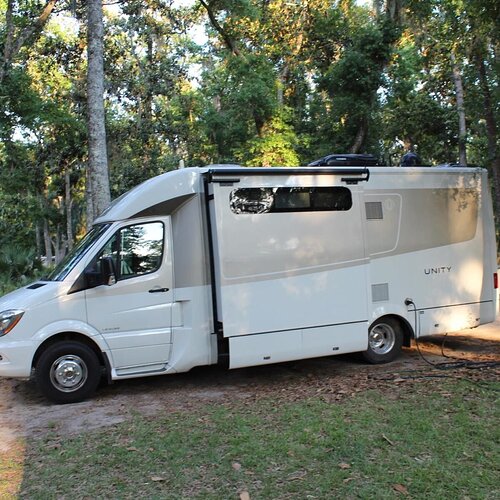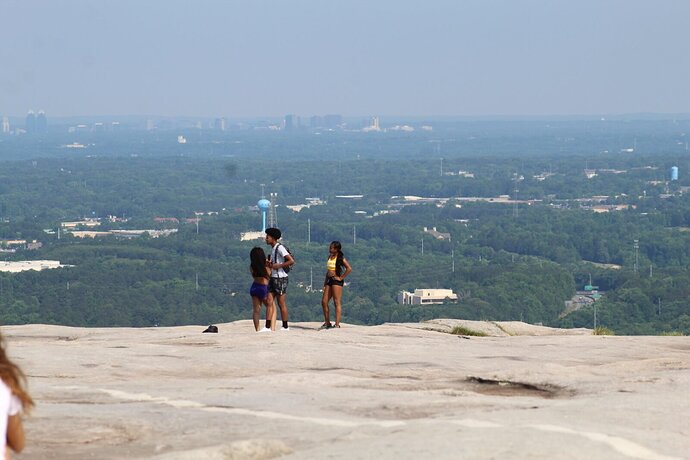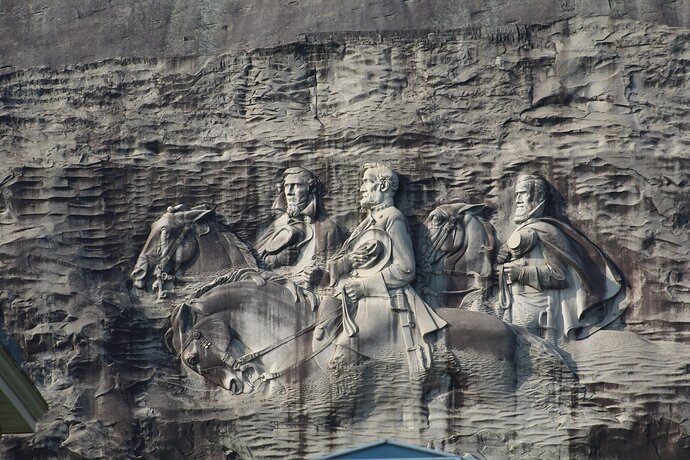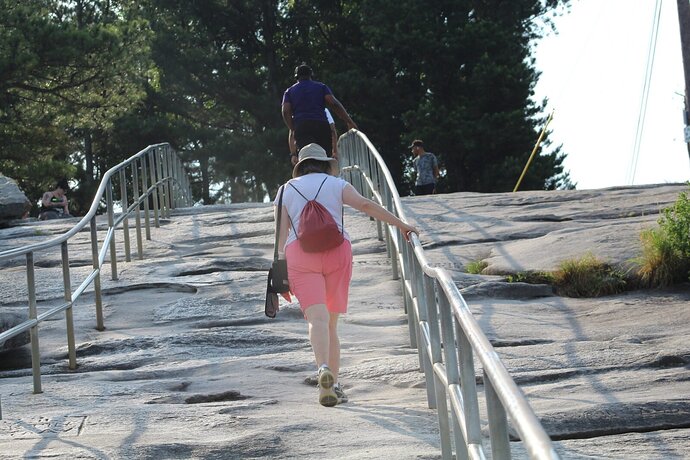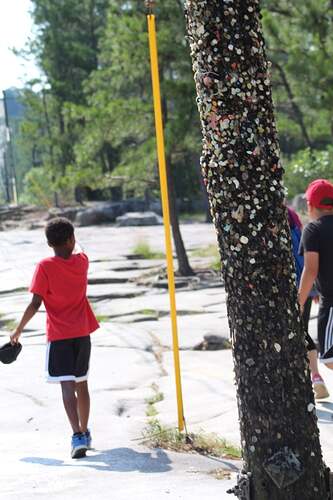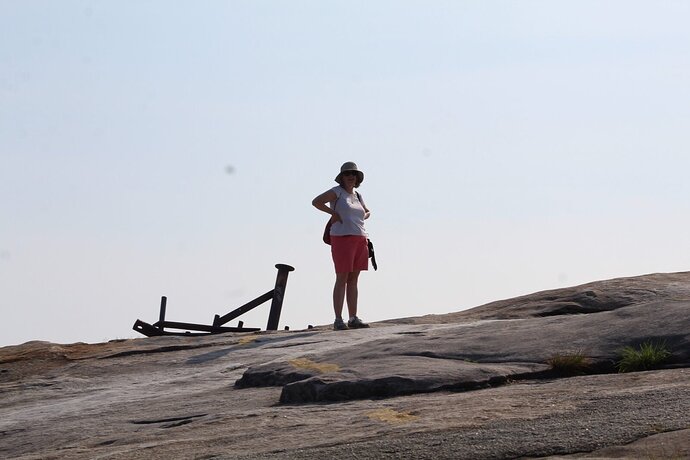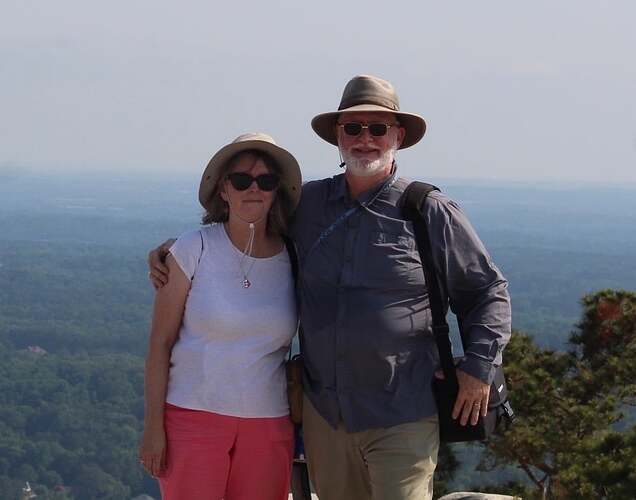Editor’s Note: This post is written by a member of LTV’s sponsored content team, The Leisure Explorers. Do you own a Leisure Travel Van and enjoy writing? Learn more about joining the team.
Our next stop in this “I’ve Got Georgia On My Mind” series is Stone Mountain. We visited Georgia in 2019 to meet with other Leisure Travel Van owners for a Maritimes tour. Georgia is just a small portion of this trip, which started in Southern Arizona and will be a seven-month adventure that will take us to Newfoundland, Canada, and back. While passing through the Atlanta area, we stumbled across a place called Stone Mountain and decided to check it out.
Stone Mountain is situated near Atlanta, Georgia, and has been visited by Native Americans and European settlers for hundreds, even thousands, of years. At the base of the mountain is a 1.3-mile trail that leads to the summit, which has been used to reach the summit since the 1820s and even earlier by Native Americans.
There is an entrance fee that’s a little pricy, but the cost is worth it. We camped right there in the park and spent a couple of nights so that we could hike the trail to the summit. The views from the trail and the summit make the price of getting into the park worth it.
In 1821, the Creek Indians signed the Treaty of Indian Springs, which opened up a large part of eastern Georgia for European settlement. This area included “Rock Mountain,” as it was then called. By 1828, hundreds of people began visiting “Rock Mountain,” as stagecoach service became widely used in the area.
A rock quarry was established in the 1820s that supplied high-quality granite to many buildings throughout America, including the Capitol building in Washington, D.C. The quarry also employed thousands of people in the local area.
The name “Rock Mountain” was changed to “Stone Mountain” in the late 1830s. During the Civil War, Union soldiers destroyed the community surrounding the mountain in the siege of Atlanta in 1864.
Unfortunately, the Ku Klux Klan, a white supremacist organization, began having meetings at Stone Mountain in 1915 with the permission of the rock quarry owner, Samuel Venable, who was also a member. These meetings continued at the mountain for over 40 years and caused Stone Mountain to be associated with the Klan’s supremacist ideas.
However, the State of Georgia acquired the mountain and the surrounding area in 1958, and by 1960, the official link between the Klan and Stone Mountain had been severed.
The carvings on the rock face of Stone Mountain depict Jefferson Davis, president of the Confederacy during the Civil War, and Generals Robert E. Lee and Thomas “Stonewall” Jackson. It was the bust of Lincoln that prompted Helen Plane, President of United Daughters of the Confederacy, to contact Gutzon Borglum (the same man who would later carve the images of Mount Rushmore) about the possibility of doing a head of Robert E. Lee on the side of Stone Mountain in Georgia. He agreed to visit the site in 1915, but upon seeing the size of the place, he said, “Ladies, the head of Lee on the side of that mountain would look like a postage stamp on a barn door!” Having thus crushed their dream, he gave them a new one–a large group featuring Lee, Stonewall Jackson, and Jefferson Davis on horseback, followed by a column of soldiers.
Because of World War I, work at Stone Mountain did not begin until 1923. The carving was limited to jackhammers and chisels until a visiting Belgian engineer taught Borglum to use dynamite for precise work. The head of Lee was unveiled in 1924. Soldiers in the audience who served with the Confederate leader were moved to tears by the likeness.
However, trouble arose between Borglum and the businessmen directing the project, and Borglum was abruptly dismissed. He destroyed his models to protect his design, so angered the directors that a warrant was issued for his arrest, and he was forced to flee Georgia. Augustus Lukeman was hired to replace Borglum, and Borglum’s head of Lee was removed. In fact, none of Borglum’s work survived when the carving was finally finished in 1970. (Ref. Historic information for this story acquired from Wikipedia and Stone Mountain Park)
Gum tree. This tree was given the dubious honor of being where hikers deposited their used gum while climbing Stone Mountain. This park is well-maintained and has thousands of visitors annually. We did not get a reservation; we just showed up and asked if there was space available. It was obvious that many of the visitors here were locals who used the site to get their daily exercise climbing the mountain.
I know that Stone Mountain is a very controversial subject today. However, it still holds a significant place in America’s history that should be preserved for future generations to help them understand where we have come from and how we got where we are today. The old saying, “If we don’t learn from history, we repeat it,” holds true, especially for the parts of our history we are not particularly proud of.
This is not an easy trail; it’s extremely strenuous. Do not attempt to hike this trail if you have heart or other physical impairments. I managed to get to the summit because of sheer determination and stubbornness. But don’t try to hike the Stone Mountain Trail if you have health challenges.
We stopped to visit one of Mary Ann’s many cousins in Georgia. (Mary Ann seems to have a cousin living in every state of the Union, although she is quick to deny that.) Another hidden gem we will visit in part three of this series, “Franklin Delano Roosevelt’s (FDR’s) Little White House,” is not far from her cousin’s home.
The history and beauty of Georgia are a place calling us back here for another look in the near future. Until next time, safe travels, my friends!
This is a companion discussion topic for the original entry at https://leisurevans.com/blog/ive-got-georgia-on-my-mind-part-two-stone-mountain/

